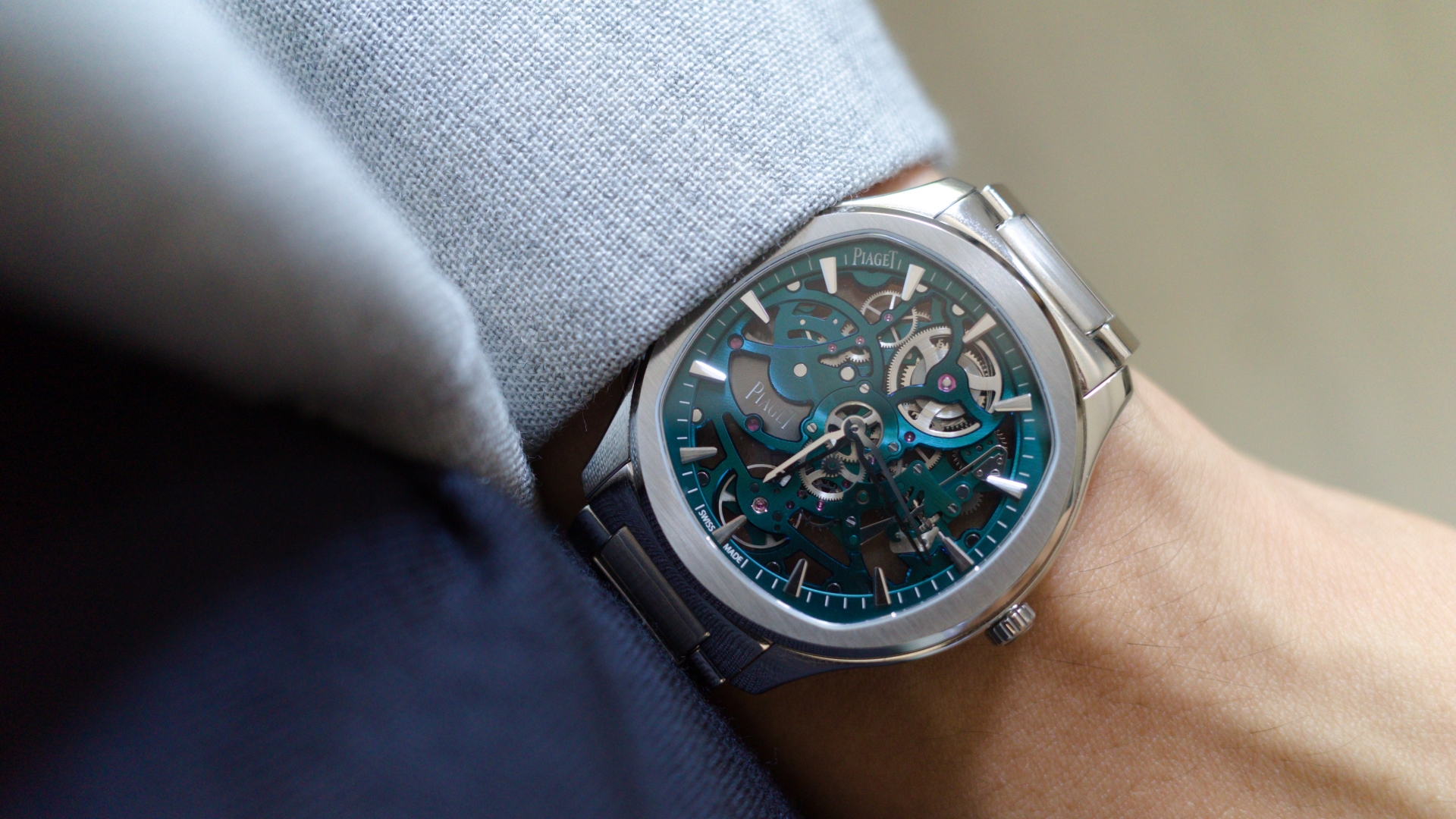First released in 2021 as a duet of slate grey and blue models, Piaget’s straightforwardly named Polo Skeleton offers an under-the-radar proposition akin to what collectors will have experienced with releases like the Octo Finissimo ‘Red’ or Laureato ‘Earth to Sky’. Last August, the brand enriched this growing segment with a new reference in green – otherwise identical, in mechanics and proportion, to its handsome monochrome siblings.
Fortunately, the injection of a healthy dose of primary colour turns this latest Polo Skeleton into a watch deserving of its own moment in the proverbial sun – aided by a wonderfully thin case, and movement architecture that capitalises on the aesthetic value inherent in non-complicated watchmaking.
Over the course of a 7-day ‘Hands On’ (during which I was given unfettered access to the green Polo Skeleton) I developed a substantial liking for the piece – informed by considerations of thinness, colour, movement design and on-wrist presence, all of which I’ve describe in due course below.
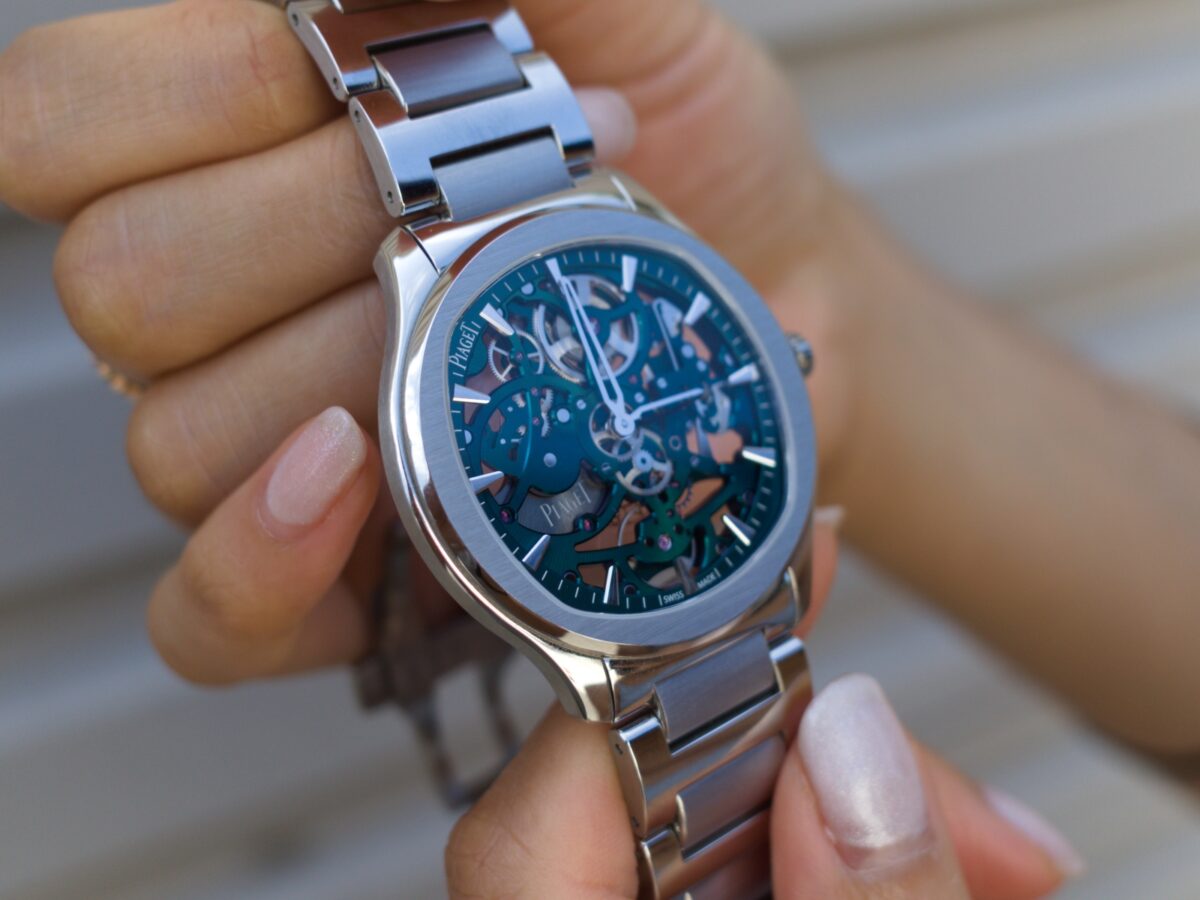
RELATED: Piaget’s New Polo Perpetual Calendar Won’t Need Adjusting Till The Year 2100
Starting with the obvious stuff, Piaget opted to give this Polo Skeleton model the PVD treatment in green; which you’ll see highlighted above in the dial’s labyrinthine mixture of circular and inwardly curving bridgework. More so than its grey and ‘Piaget blue’ counterparts, the use of colour here is extremely nuanced. The movement’s coating flits between a rich, lustrous shade of blue and what is almost teal green – mirroring the amount of fluorescent light present in the surrounding environment, so wearers effectively get two colour finishes in a single watch.
This interplay between colours is most apparent when you’re handling the Polo Skeleton in the metal: even under garden variety office lighting, a slight rotation of one’s wrist causes the bridgework to change from blue to green in an instant; adding a layer of visual interest you mightn’t immediately be aware of when looking at static images.
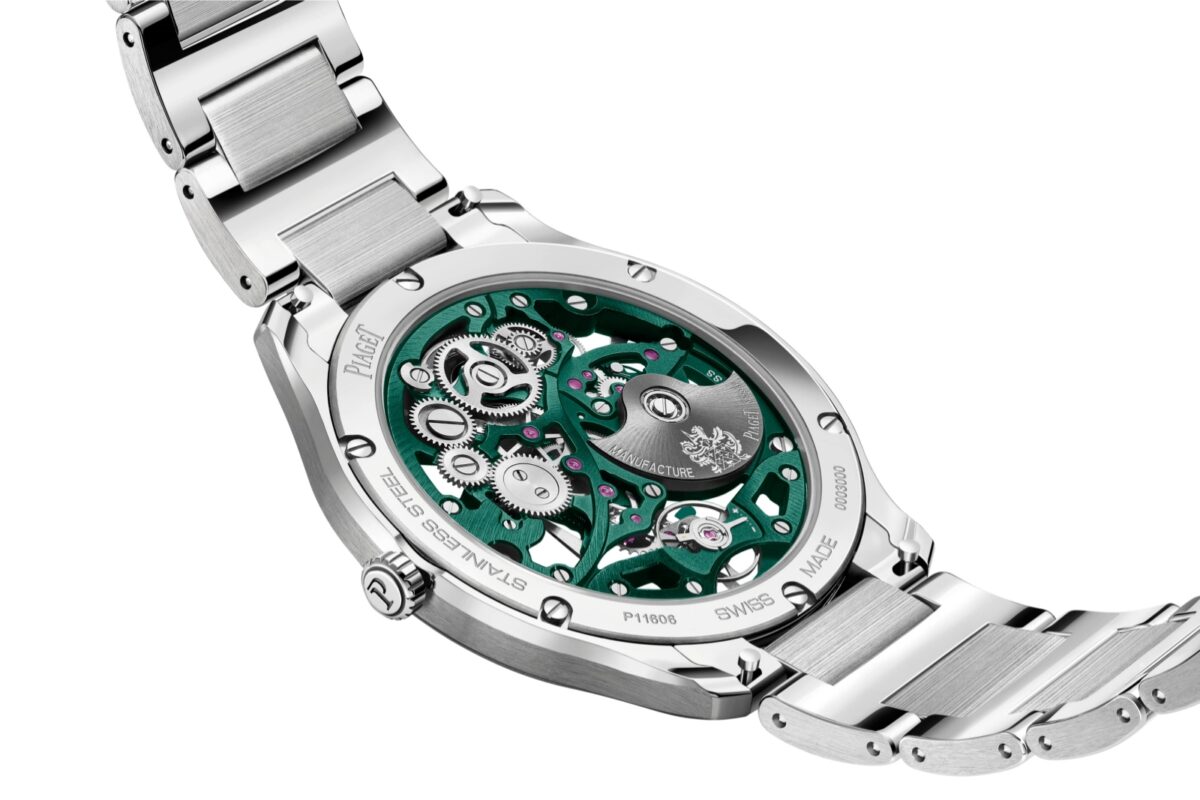
On the subject of form factor, the watch’s 42mm x 6.5mm sizing is as much about palpable visual drama as it is ergonomics. That doesn’t necessarily mean the Polo Skeleton is all that showy of a daily wearer – even in green! – but its expansive diameter, coupled with the exposed gear train tend to hold viewers’ attention once they’ve glanced at it a handful of times.
That distinctive, flat cushion heft (arguably the by-product of all the cues the modern Polo collection borrows from the discontinued Emperador) is in stark contrast to the watch’s thickness. Granted, it would be facetious to describe the Polo Skeleton as one of those watches that’s ‘so light, it feels like you’re wearing nothing at all‘; yet the 6.5mm high case lends a degree of refinement to the general design that helps it glide seamlessly through work, leisure, and all but the most irregular of daily settings.
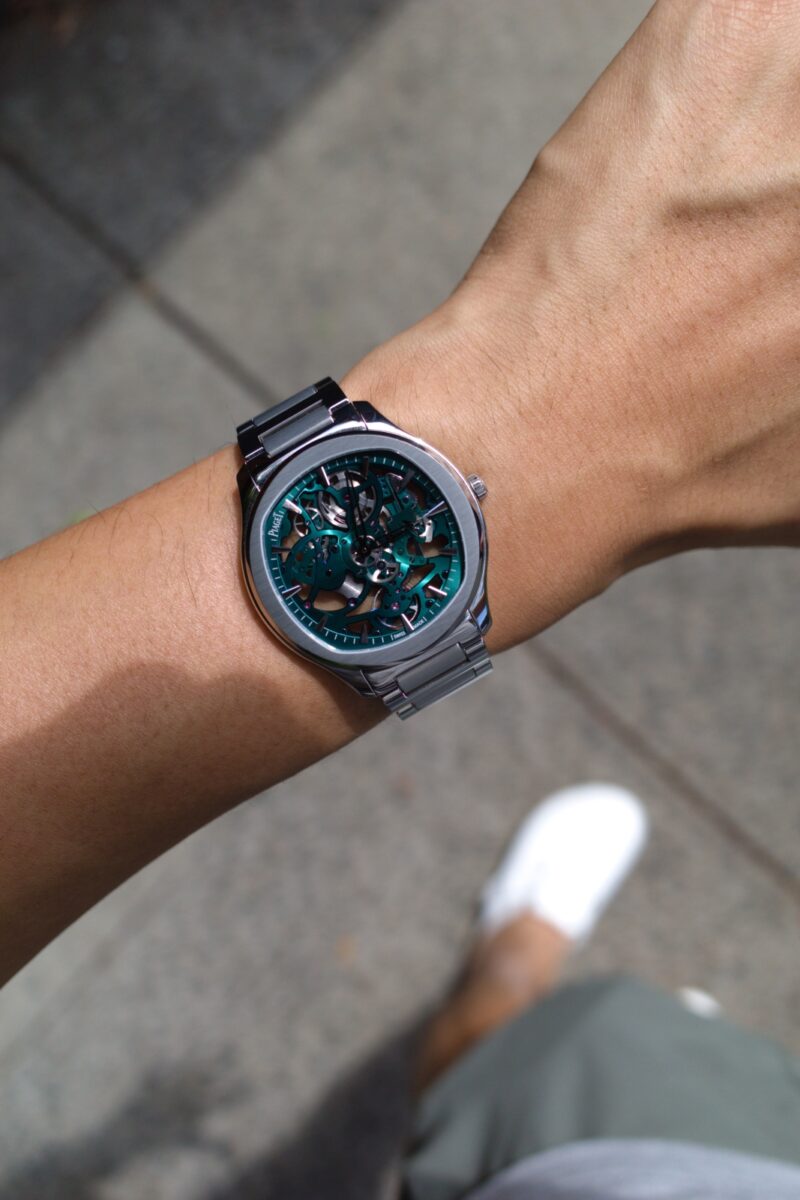
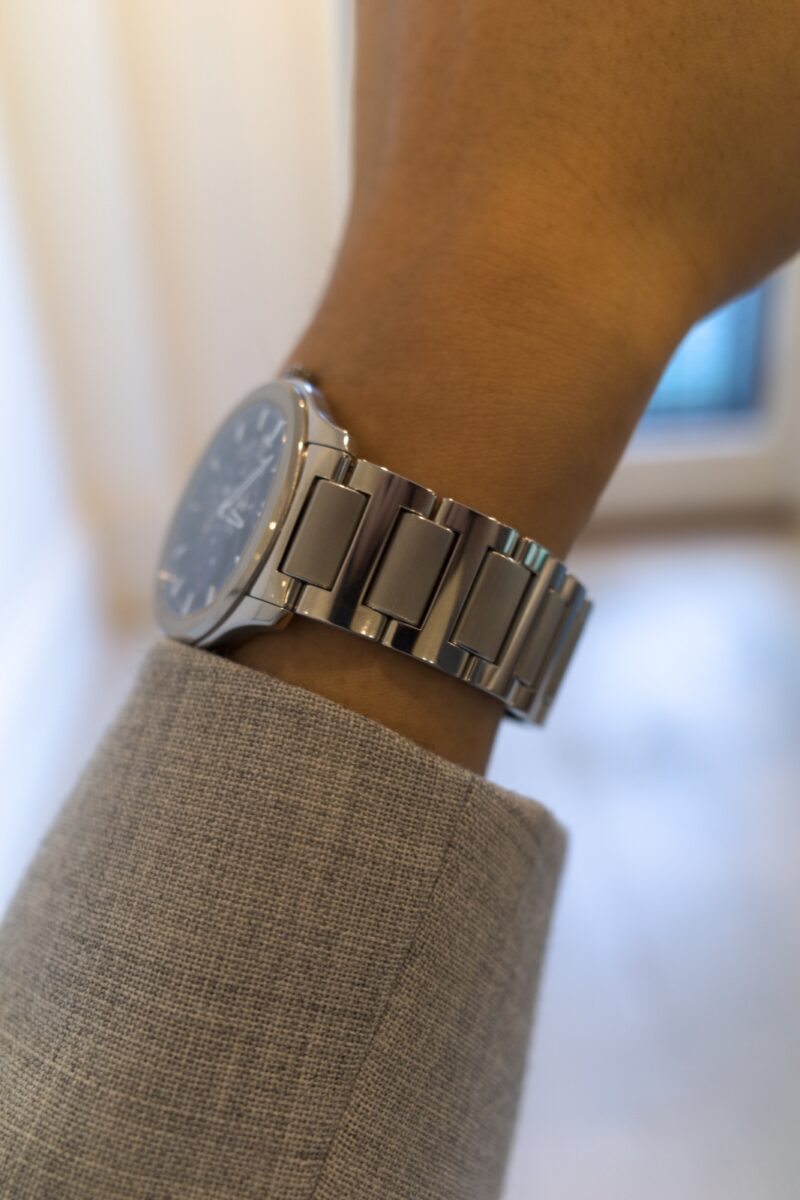
That premise – one of fascinating contradictions – continues once you begin to take in the movement’s intricately spaced layout. Internally designated the 1200S1, this is Piaget’s fourth generation of its signature, ultra-thin self-winding calibre: featuring a micro-rotor and see-through construction, easily among the thinnest mechanical watch movements in the world.
For reasons previously alluded to, the thinness of the 1200S1 yields a range of practical benefits for the wearer that outweigh its (relatively) tidy power reserve and 30m water resistance. Beyond that, horology geeks who love the minutiae of watchmaking will probably be unfairly chuffed with this green Polo Skeleton.
The combo of satin-brushed bridges and overlapping going wheels really comes to life once you start winding the watch’s crown – emphasising the inextricable relationship between the various mechanisms that, together, imbue this skeletal framework with its beating heart.
RELATED: Audemars Piguet Reveals New Watches For ‘First Semester’ Of 2023 – Here Are Three Bangers
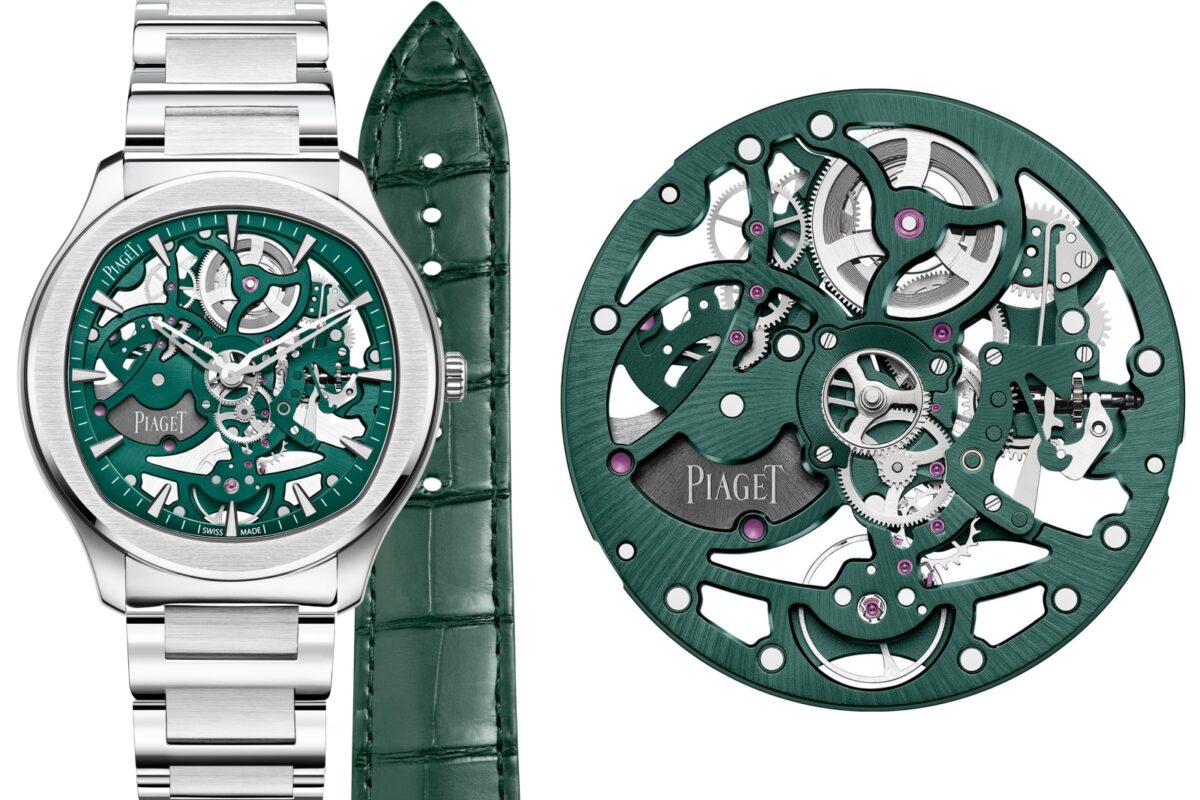
Assuming you’ve made it this far – well done, FYI – it should come as no surprise that I was won over by the Polo Skeleton’s charms. From a selfishly individual point of view, there were a couple of stylistic choices Piaget’s watchmakers made that didn’t fully resonate.
By way of example, the rotund cushion case and perfectly circular bezel – both signature elements in the original Emperador design – feel like missed opportunities (particularly in the context of a fully skeletonised watch), but equally, there’s a credible discussion to be had about how these are intended as links to Piaget’s heritage in elegant, unisex jewellery.
Again, these are minor quibbles as opposed to fatal flaws and do nothing to detract from the seemingly infinite dynamism that is at the heart of this lean, green skeletal machine: a uniquely ‘Piaget’ take on the ubiquitous high-end steel sports watch.
